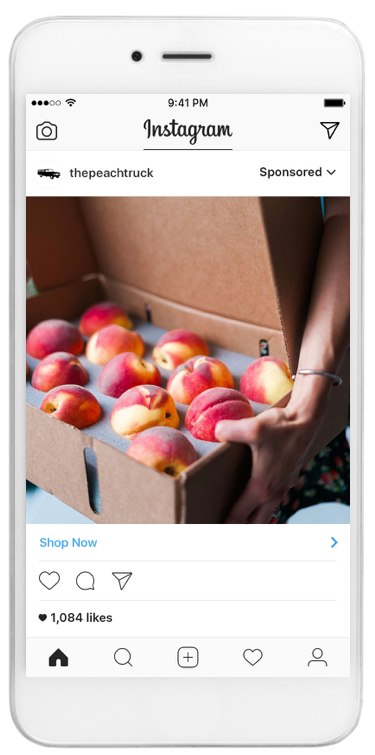When you think of Instagram, what comes to mind? For most of us, it’s thoughts of food, puppies, even teenage selfies. After all, the social media channel thrives on user-generated imagery as its source of content. (And who doesn’t love puppies?)
But it’s much more than that.
Who Uses Instagram?
To say Instagram is popular among millennials and users who are drawn to more visual content would be a gross understatement.
Nearly a third of adults use Instagram. That’s almost half a billion people, and most of them are between the ages of 18 and 29 years old.
The State of Marketing on Instagram
Instagram has also gained significant traction among celebrities. In 2016, big brands realized they had an opportunity to use the channel to promote their products via influencer marketing. Basically, companies will share their products with celebrities in exchange for a shout-out, or they’ll pay outright to sponsor celebrity posts that endorse their business. Typically, these brands will look for celebrities with more than 100,000 followers and negotiate their promotions from there.
That said, that’s not the route I’m recommending you take. Unless you’ve got a fat advertising budget, influencer marketing is likely out of the question. Instead, let’s discuss the savviest ways local businesses use Instagram to get found and followed.
Small Business Marketing on Instagram
There are a number of local business industries that could use Instagram to build their brand. From animal services providers, to salons and spas, to tourism (as seen in this case study by Venngage), there’s no doubt your small business could find a place to fit in.
Some marketers will say Instagram’s all about the quality of the images you’re posting. On the surface, that seems pretty intuitive. In a channel that’s all about images, the images are important…right?
It’s not that simple.
What good is a perfectly produced image if it doesn’t reach your target consumer? Wasting your time generating beautiful content that’ll fail to be seen isn’t on my top list of recommendations.
Here are the tips that did make my list.
1. Consider paying to play.
The biggest hurdle on Instagram is getting in front of the right audience. The location tagging isn’t quite as intuitive as it is on tools like Facebook, so you’re unlikely to get found by simply adding your location to your posts.
But like Facebook, Instagram offers targeted campaigns and paid ads.
Here’s how Instagram ads work:
- Create a Business Page.
- Select an ad objective, refine your target audience, and choose how you want to format your ad.
- Choose a budget.
- Publish!
Here’s what the simplest version (a photo ad) looks like.

2. Hook into your other social channels to gain followers and visibility.
By connecting your Instagram with your other social channels, any image you share on the ‘gram will flow straight through to your other business pages. Not only will this save you time and money via posting and reposting across channels, but followers on these other channels will be inclined to click through to your Instagram and follow you there as well.
3. Use hashtags to cut through the clutter.
Hashtags are your way of associating your posts with a broader collection of posts that share your same hashtag. If you choose your hashtags wisely, someone who may not yet have interacted with your business, but who is scrolling through posts with your tag, is likely to come across your post.
Not sure which hashtags to use? (#talkaboutconfusing) Take a look at the tags your competitors use or brands you admire are using, as long as they’re relevant to your business. You can also research trending hashtags and incorporate those to try to get noticed in the latest conversations.
Pro tip: Instagram will let you include up to 30 hashtags in a single post. Resist the urge! A study by SocialFresh revealed that posts with 7 hashtags generated the most engagement. Posts with 11 hashtags still got attention, and those with more than 11 hashtags dropped in likes and engagement. Any more than that, and you’ll look awfully spammy.
4. Learn the phrase, “Link in bio.”
Is a large part of your social strategy focused on getting traffic to your business website?
Instagram doesn’t make it easy, because they don’t allow you to include clickable links in your posts.
Clever marketers quickly learned to get around that limitation. Repeat after me: “Link in bio.”
Those three words, when appended to your posts are your audience’s clue to tap your business’s name and visit your bio for more information. Yes, it requires an additional click we wish it didn’t. But, if your post is compelling enough, you just might earn those clicks through to your website.
5. Promote open appointments.
One of the most common ways businesses like salons and spas use Instagram is to share last-minute appointment openings. There are lots of apps out there that help you design whatever text you want to convey into the appropriately sized image for Instagram posting. Here are some popular options.
6. Invest in a social listening and KPI tool.
The best way to ensure you’re on the right track is to measure the effectiveness of your work. More than counting likes for each post, you’ll want to use the ad console to measure your posts’ reach, engagement, influence and conversions.
If you didn’t opt into Instagram ads for your business, consider investing in a third-party tool to measure your effectiveness by way of other metrics like comments, followers and referral traffic. A top player in this industry is Sprout Social, who offers an Instagram Competitors Report.
What are you doing on Instagram?
Let us know in the comments!






